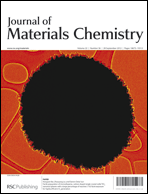Hydroxyapatite (HAp) single crystals with hexagonal rod-like shapes have attracted much attention in orthopaedic and tissue engineering fields, as they have a similar shape to HAp mineral components in human natural bone. The significance of HAp crystals lies in the high surface reactivity of their exposed facets with water and some biological molecules. However, few studies have been reported on the fabrication of an integrated architecture with these single crystals, with an attempt to utilise the benefits of the reactive facets to improve the functionality of the biointerface. In this study, an integrated three dimensional (3D) architecture is formed by nano/submicron HAp single crystals (with an elongated hexagonal bipyramid shape) on HAp–tricalcium phosphate (TCP) biphasic ceramics using a simple one-step method. The described method, based on a crystallographic controlled dissolution–recrystallization mechanism, allows HAp single crystals to coalesce, forming an interconnected structure. The single crystal structure can be varied by adjusting the proportion of HAp (mother phase) and α- or β-TCP (nutrient phase). The resultant architectures are proven to significantly enhance hydrophilicity and promote primary human osteoblast (HOB) adhesion.

You have access to this article
 Please wait while we load your content...
Something went wrong. Try again?
Please wait while we load your content...
Something went wrong. Try again?


 Please wait while we load your content...
Please wait while we load your content...